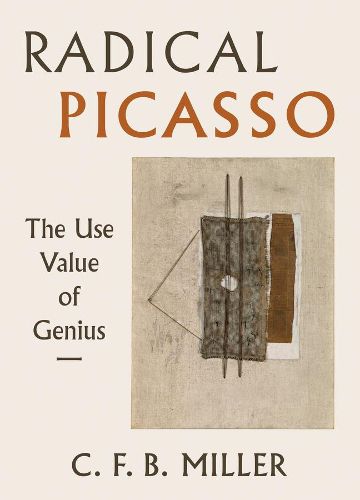Readings Newsletter
Become a Readings Member to make your shopping experience even easier.
Sign in or sign up for free!
You’re not far away from qualifying for FREE standard shipping within Australia
You’ve qualified for FREE standard shipping within Australia
The cart is loading…






While the personality cult of Pablo Picasso still holds sway over his popular reputation, the force of his work has fallen into disuse. In this groundbreaking and ambitious study, C. F. B. Miller uses that force to undo and remake our understanding of the twentieth century’s most legendary artist. By critiquing this legend and showing how, even now, the art itself disrupts received ideas, Radical Picasso rethinks Picasso’s function in the history of modernism.
Presenting a fresh account of cubism as an art of negativity and excess, Miller juxtaposes early cubist painting with G. W. F. Hegel, high cubism with Plato and his critics, and synthetic cubism with Walter Benjamin. The guitar assemblages of 1926 radicalize collage, taking up the racialized and gendered remainders of modernist aesthetics. Next to surrealism, Picasso’s sexuality becomes a biopolitical problem, while the Crucifixion of 1930, and the Picasso myth at large, intersect with the writings of Georges Bataille. At the same time we see how, from his arrival in the art market to the games he played with his self-image in the 1950s, Picasso exploited the very fictions of genius that today determine his posthumous brand. Ultimately, in deconstructing the institution we call Picasso, Radical Picasso retrieves his art from misrepresentation and argues for its continuing use value as a means of thought.
$9.00 standard shipping within Australia
FREE standard shipping within Australia for orders over $100.00
Express & International shipping calculated at checkout
While the personality cult of Pablo Picasso still holds sway over his popular reputation, the force of his work has fallen into disuse. In this groundbreaking and ambitious study, C. F. B. Miller uses that force to undo and remake our understanding of the twentieth century’s most legendary artist. By critiquing this legend and showing how, even now, the art itself disrupts received ideas, Radical Picasso rethinks Picasso’s function in the history of modernism.
Presenting a fresh account of cubism as an art of negativity and excess, Miller juxtaposes early cubist painting with G. W. F. Hegel, high cubism with Plato and his critics, and synthetic cubism with Walter Benjamin. The guitar assemblages of 1926 radicalize collage, taking up the racialized and gendered remainders of modernist aesthetics. Next to surrealism, Picasso’s sexuality becomes a biopolitical problem, while the Crucifixion of 1930, and the Picasso myth at large, intersect with the writings of Georges Bataille. At the same time we see how, from his arrival in the art market to the games he played with his self-image in the 1950s, Picasso exploited the very fictions of genius that today determine his posthumous brand. Ultimately, in deconstructing the institution we call Picasso, Radical Picasso retrieves his art from misrepresentation and argues for its continuing use value as a means of thought.